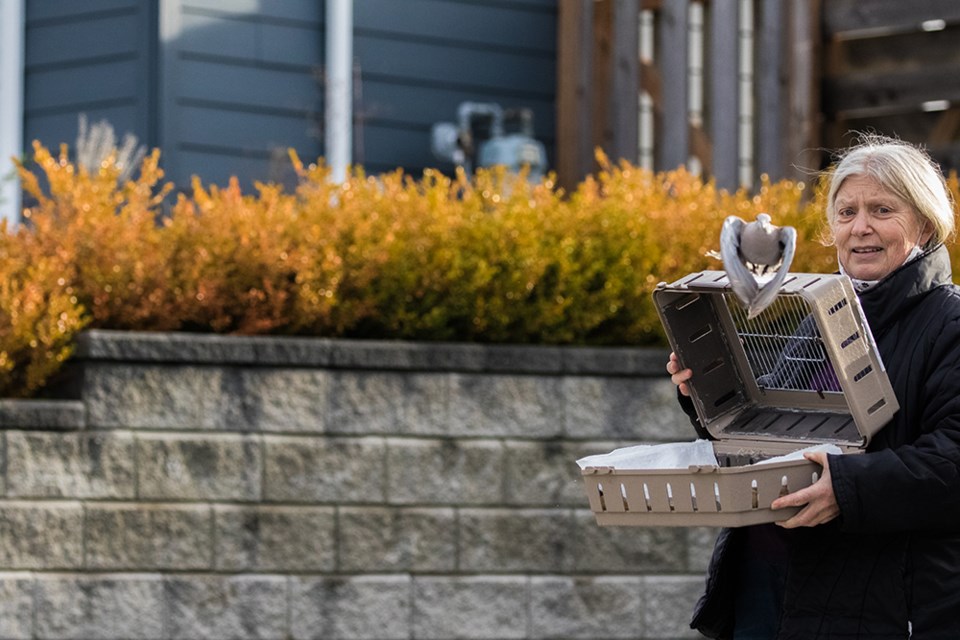CAUGHT BY CAT: With both a broken leg and wing and many nasty puncture wounds, this tortured Eurasian collared dove was extracted from the mouth of a guilty cat by its homeowners on Selkirk Avenue. Once at Powell River Orphaned Wildlife Society (PROWLS), it was started on a course of antibiotics.
After being stitched back together at Westview Veterinary Hospital, it was both stressed and shy while it convalesced at PROWLS. When its wounds were healed and it was mobile and active again, it was moved into the front porch, where it settled down with the song birds, also healing, and started flying again.
After three and a half weeks, it was ready for release back into its neighbourhood. It quickly flew up onto a roof where its mate showed up immediately. They were both amazed and pleased.
Doves (as well as pigeons) mate for life. Their extended family has a strong bond and they stay together in the same vicinity. Once a pair has formed, males show females potential nest sites, often in tall trees.
In-between these “site visits” the pair vigorously groom each other. The male dove brings the female twigs, grasses, roots and other nesting materials, which he sometimes pushes directly under her. He will aggressively chase away other collared doves, as well as predators.
A pair often uses the same nest for multiple broods during the year, and may renovate old nests. The monogamous pair may raise up to six broods a year; the female can lay a new clutch while young are still in a previous nest.



